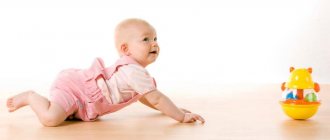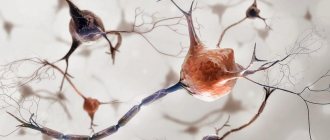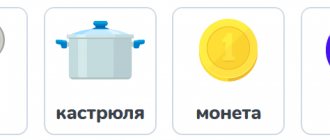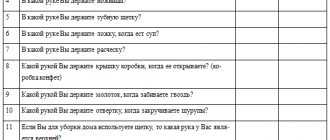Leading activity is a certain direction of activity performed by the child, which determines the most important moments in the formation of the psyche and the development of its processes and characteristics. In leading activity there is a transformation, restructuring of mental processes, methods of previously performed activities, and personality development.
Leading activity is a category in psychology that does not necessarily occupy the main time in a child’s life, but it determines the process of development of the main required qualities and new formations in each period. A change in the emphasis of activity occurs with age, but is not limited by strict boundaries, because focused on a change in motivation, which changes during the activity performed.
Psychological age in relation to this concept is considered in a combination of criteria of the social situation and the needs of basic new formations; the combination of these points takes into account the leading type of activity. Not only the number of days lived by a person, but also the social situation reveals the child’s typical relationships with people, through which one can trace the features of the individual’s personal relationship with reality. The formation of new processes can be accessible to the child only through activities performed that establish contact between him and the elements of reality. In addition to this external property, leading activity rebuilds and forms new processes that are basic for a certain age of the child.
The emergence of a new leading type does not cancel the implementation of important activities at the previous stage; rather, it is similar to the process of transformation and development of previously performed activities to satisfy the new emerging interest.
This is a leading theory in psychology that has many followers and critics. Thus, it is emphasized that despite the fact that the activity performed mediates developmental processes, it is not clearly fixed and defined for age intervals. More than the temporary course of events, the influence is exerted by the level of development and orientation of the social groups in which the child is included. Accordingly, the most relevant activity in the current social situation will become the leading one. This theory is valid only within the framework of child psychology and does not extend to further existence. The concept is not advisable to use to illustrate and study the mechanisms and components of holistic and adequate personality development, but only for one side of it - the development of the cognitive component.
What is leading activity
Leading activity is a vector that determines the implementation of a child’s activity, which characterizes the most important moments in psychology and the development of all its processes and characteristics.
Leading activity is an activity that forms the foundations of a child’s psychological formations at a certain stage of his development and personality formation.
The Soviet psychologist and founder of the term “leading activity” L. Vygotsky deeply penetrated into the foundations of human (children’s) consciousness and explained that human thinking arises as a result of leading practical activity.
It is worth noting that when changing a leading activity, due to a change in age, the skills acquired from the previous leading activity do not disappear, but continue to be improved.
The concept of leading activity in domestic psychology
The term “leading activity,” introduced by Russian psychologist Lev Vygotsky, formed the basis of the “Theory of Activity,” developed by his student and follower, Russian psychologist Alexei Leontiev.
Activity theory is a conceptual framework that has its origins in the sociocultural tradition of Russian psychology. The fundamental concept of structure is “activity,” which is understood as a purposeful, transformative and developing interaction between actors (“subjects”) and the world (“objects”).
Simply put, activity theory is about who does what, why and how.
Sometimes it is called the theory of cultural-historical activity.
Activity theory provides a lens through which to identify and
better understand human activity. Vygotsky challenged the stimulus-response model of his more widely known contemporary Pavlov, and promoted
the idea that, unlike animals, human activity is goal-directed and carried out by a set of actions using “tools” that can be physical or psychological.
Such psychological “tools” include language, as the most important instrument of joint human activity.
Leading activity is mainly characterized not by a quantitative, but by a temporary indicator and has a number of characteristics:
In addition, it is necessary to distinguish activity from action. Action is a word that indicates that a person does something, acts (voluntarily or involuntarily, mentally, word or deed), which usually implies a movement or change in state, position or situation and affects the person.
Activity, corresponding to the psychological series (motive > goal > task), includes three levels: activity > action > operation. This is how the activity develops.
From birth to one year
During the first year of life, a person is very dependent on other people. By and large, he will not survive without his parents or other adults caring for him. Child development specialists believe that it is incorrect to use the very concept of “leading activity” for children under two months of age. This is wrong, because such crumbs, in principle, are not able to express themselves in any way. But having overcome this milestone, they begin the first stage of their development, in which they must establish emotional and communicative connections with loved ones
At this time, a person learns to differentiate his feelings, concentrate attention, adequately perceive the environment, he develops the rudiments of speech skills and logical thinking, with an awareness of cause-and-effect relationships
Structure and types of leading activities
Subsequently, along with the “Theory of Activity”, the psychologist A. Leontyev developed the structure of leading activity:
The following types of leading activities are distinguished, differing in their characteristic features and age specificity:
Undesirable cases of skipping over certain stages are also possible, which, as a rule, leads to very negative consequences: neuroses, poor adaptation, lack of interest and curiosity in the world around us, as well as difficulties in establishing permanent or long-term warm and trusting relationships.
Periodization of leading activities in child development
Russian psychologist D.B. Elkonin presented two models of periodization systems for leading activities:
- “a child is a social adult”
- “a child is a social object”
D.B. Elkonin argued that in activities related to the “child - social object” , there is a difference between natural and cultural (artificial) action, and the mechanism of differentiation is a specially organized trial action with a special culturally constructed object.
In activities of the “child - social adult” , the developmental mechanism is a complete reconstruction of life situations in which the child discovers his own feelings.
Based on this, it is obvious that the activities of each stage are multifaceted and at the same time there is a motivational and operational component.
From the point of view of periodization of leading activities, in the development of a child it is worth taking into account the influence on a person (child) of 3 main factors:
- Environmental influence: education, climatic conditions.
- Internal biological conditions: congenital conditions, influences affecting a person during the prenatal, perinatal and postnatal periods.
- Individual activity of a person: human activity (work, rest, leisure).
Leading activities at an early age
At the end of infancy, the child does not yet understand the essence of surrounding objects and their functions. The leading activity of an early age (from 1 to 3 years) is characterized by a predominance of object-tool (manipulative) activity that takes on a social context, i.e. implies precisely a social way of mastering a subject. There are many experiments with the qualitative features of objects.
The activity is divided into three stages:
- Moving from non-specific to specific subject use with the help of adult mentoring. Example:
Knows that this is a cup > comes to an understanding of what it is needed for > uses it for its intended purpose.
- The stage of transferring action from one object to another. Example:
Has mastered the mug (sippy cup) > can begin to master the glass.
- The stage of transferring the action with a given item into the game channel
Learned to drink from a cup > tea party for toys.
Leading activities in primary school age
With the onset of primary school age (7 - 11 years), educational activities become the leading activity. Moreover, any educational activity that allows one to acquire new knowledge and skills is considered. Thanks to this, there is a massive increase in vocabulary, with the ability to invent your own languages. During this period, active growth occurs and, as a result, disharmony in development occurs and additional stress on the nervous system. This period may be marked by rapid fatigue, increased activity and excitability. During the learning process, not only theoretical knowledge is acquired and structured, but also systems of assessment, control and discipline. The concept of hierarchy is strengthened.
Leading activities in adolescence
Youth (from 16 to 18 years old) is characterized by educational and professional activities, where new goals and value systems are established and necessary skills are honed. Educational activities acquire a professional, promising coloring, and with it an area of interest. We are not talking about self-determination yet, but we can already talk about readiness for it.
During this period, the readiness to make decisions and the concept of responsibility for them matures. As well as the opportunity and necessity of making one’s own contribution to the development of society.
At this age, it is not uncommon to “try on” the role of an adult idol - a real person or a literary hero. Psychological and physiological processes slow down, and crisis periods become longer.
Afterword
Conscious purposeful activity is the difference between people and animals. In its process, a person creates objects of material and spiritual culture, transforms his abilities, ensures progress (although sometimes regression) of society, influences nature (preserves or destroys).
Any activity is a creative way beyond the natural, work on oneself and the world. Man not only consumes, but also creates. With her help he influences his life.
Thanks to it, the mental development of the individual is carried out. However, at the same time, mental processes (perception, attention, imagination, memory, thinking, speech) act as components and even separate types of activity.
Why do parents need knowledge about leading activities?
Knowledge and understanding by parents of the laws of age-related development of children leads to a simplified understanding and acceptance of the fact that the concepts of leading activity and leading type of communication play a special role, since they determine the development of cognitive processes in the child and form the main personality traits.
And although the leading types of communication and activities change as the child’s age changes, their diversity increases.
In addition, it should be taken into account that play is a key activity at almost every stage and can be seen and used as a mediator to promote children's cognitive development and relationship building.
Literature
- Burmenskaya G.V. Developmental psychological approach to counseling children and adolescents - Proc. aid for students higher textbook institutions M.: Publishing house, 2002. - 416 p.
- Karabanova O. A. Age psychology. Lecture notes M.: Iris-press, 2005. - 238 p.
- Obukhova L. F. Child psychology: theories, facts, problems. — 3rd edition, stereotypical. - M.: Trivola, 1998. - 352 p.
- Terekhina N.V. Leading activities of adolescence from the point of view of the main developmental tasks - Moscow City Psychological and Pedagogical University, 2010
- Elkonin B.D. Introduction to developmental psychology (in the tradition of the cultural-historical theory of L.S. Vygotsky) M.: Trivola, 1994 - 168 p.
- Elkonin D. B. Child psychology: textbook. aid for students higher textbook establishments. — 4th ed., erased. - M.: Publishing House, 2007. - 384 p.
Play as a leading activity in preschool age
Cultural-historical psychology defines play as a leading activity in preschool development. Vygotsky's seminal work (1967–1978) identified two categories of leading influences: play makes a fundamental contribution to the development of semiotic mediation and involves the active appropriation of social roles and rules, as well as other integral aspects of social organization.
Play is the activity in which the most important developmental changes occur. According to Vygotsky, play is critical and an integral part of developmental growth because it helps prepare the child for the next developmental activity—school.
Creativity and imagination begin to emerge through play. The game develops cognitive skills of symbolic representation, which help form abstract thinking that turns into symbolism.
During play, children move from specific activities associated with object play to simulated play. Their development moves from social activity to cognitive-abstract activity.
Child-led play often requires educators to be agile, skillful, and experienced in teaching.
Play is not only the main activity in preschool education, but also an important means of developing children's self-regulation, language, cognitive and social skills.
According to psychologists, the game can be divided into five main elements:
- Creates a good mood.
- Doesn't set any goals for himself.
- The plot is spontaneous and voluntary.
- Encourages active participation.
- Promotes the development of imagination.
Some types of best types of game:
- Sand - Scooping, digging, pouring and sifting teaches children the principles of work and also strengthens their muscles and coordination.
- Playing with water introduces basic concepts such as volume. Water play is great for learning the consequences of actions, developing hand-eye coordination and physical strength.
- Sculpting strengthens fingers, prepares the hand for writing, develops fine motor skills, creativity and hand-eye coordination.
- Dress Up and Role Play – Dressing up helps children begin to understand the adult world, roles and interests, and promotes social interaction. Dressing up helps reinforce aspects of self-care that are essential in elementary school.
- Play Characters and Dolls - Mini-figure characters and dolls allow girls and boys to develop their social play, develop imagination and teach expression.
- Drawing - allows children to experience their world in a sensory way and develop self-expression using paints, pencils or pastels, introduces them to colors and mixing, and develops pre-writing skills.
- Legos, mosaics, sorters - lays the foundations for spatial thinking, logical reasoning, ordering and recognizing different shapes, sizes and colors.
- Music, dancing, singing - help develop a sense of rhythm, language and form the basis of literacy skills, as well as basic mathematical concepts such as counting. Dancing helps develop strength, flexibility and coordination.
- Running, jumping, climbing, swinging - develop gross motor skills, increase confidence, develop resilience through risk taking.
- Playing in nature is good for health, teaches respect for the environment and the origins of biology, helps to become more independent and inquisitive.
- Sensory play is any play activity that involves touch, smell, taste, sight and hearing. It can be provided with a bowl of jelly, water beads, ice, rice or even small containers of sand. Sensory play encourages exploration and building skills.
- Board Games – In addition to the topics of numbers, colors, shapes and early phonics, these games are vital for teaching children turn-taking and communication.
- Cooking and pretend cooking - Cooking or pretend cooking, serving, and shopping are great play scenarios for kids. Cooking itself combines elements of sensory play, math ideas and concepts, home safety and following processes, as well as social interaction and being considerate of others.
- Creative play – essential: a random set of objects, time and place for creative play. It develops imagination, which is important for literacy and intellectual thinking skills, increases their sense of self as well as understanding of the world around them, and the ability to cope with boredom.
- A cardboard box - it can be a house, a car, a house for friends and dolls. This game allows you to explore your world, developing your imagination and starting to think like an engineer.
In his writings, Vygotsky explains that play is a cognitive activity and an affective activity that directly contribute to the development of children. Play creates a zone of proximal development, giving children an understanding of the values and rules of their sociocultural world. In addition, play helps develop and improve fine and gross motor skills, improve physical fitness, establish social roles, build alliances, improve problem-solving skills, and enhance physiological, emotional and psychological well-being and resilience.
Natalia Shakhova
Early childhood - 1-3 years
After a year, children begin to take an active interest in the world around them. In order to become “like” adults, they imitate them in everything, trying to use various substitutes as tools. So, a stick replaces a spoon, a sand bucket replaces a cup, they treat toys with dad’s headphones, and they fix a car with their own finger, imagining it as a screwdriver. In this way, children develop imaginative thinking, they study the various properties of objects. Over time, the game evolves and becomes more intelligent, versatile, several characters appear in it, each of which has its own role.










